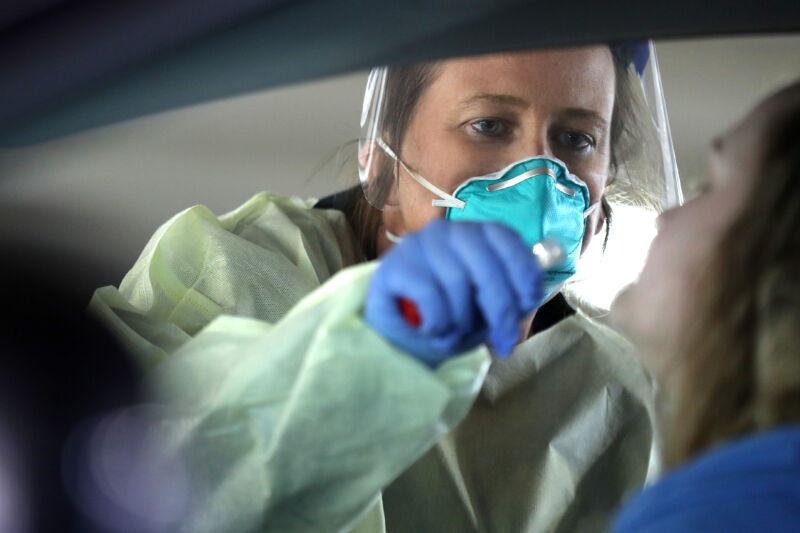
As the United States continues to struggle to ramp up basic testing for COVID-19, experts at the World Health Organization on Monday emphasized that countries should prioritize such testing—and that social-distancing measures are not enough.
“We have a simple message for all countries: test, test, test,” WHO Director General Tedros Adhanom Ghebreyesus (aka Dr. Tedros) said in a press briefing March 16.
Dr. Tedros noted that, as the numbers of cases and deaths outside of China have quickly risen, many countries—including the US—have urgently adopted so-called social-distancing measures, such as shuttering schools, canceling events, and having people work from home. While these measures can slow transmission and allow health care systems to better cope, they are “not enough to extinguish this pandemic,” Dr. Tedros warned.
What’s needed is a comprehensive approach, he said. “But we have not seen an urgent-enough escalation in testing, isolation and contact tracing, which is the backbone of the response,” Dr. Tedros said.
“The most effective way to prevent infections and save lives is breaking the chains of transmission,” he went on. “And to do that, you must test and isolate. You cannot fight a fire blindfolded. And we cannot stop this pandemic if we don’t know who is infected.”
Unnecessary
The message was a sharp one for the United States, which has struggled to ramp up its testing capacity. While other countries have performed hundreds of thousands of tests since the outbreak mushroomed out of China’s Hubei Province in January, some estimates suggest that the US has tested a mere 38,000 people or so—a majority in just the last couple of weeks. By contrast, South Korea has been testing nearly 20,000 people every day.
In a series of press conferences in recent days, members of the Trump administration’s Coronavirus Task Force, led by Vice President Mike Pence, have announced plans to dramatically increase the country’s testing capacity, including partnerships with private companies. The officials have suggested that the country will soon be able to tests tens of thousands if not hundreds of thousands of people per week.
But confidence in the plans have been shaken by clumsy descriptions and overstatements. That includes an announcement Friday by President Trump that Google was developing a website that would allow people nationwide to determine if they should get tested and help them set up testing at a local lab. The announcement reportedly took Google by surprise. Its sister company, Verily, has since released such a site, but it only serves people in California’s Bay Area and, so far, doesn’t provide any useful information or services.Additionally, while experts at the WHO recommend thorough testing of suspected cases and contacts to get ahead of transmission, the Trump administration has so far emphasized mainly testing people with noticeable symptoms who largely self-identify as candidates for being tested. Officials also said testing would be prioritized for health care workers and those 65 years and older who had symptoms.
“We don’t want everybody taking this test. It’s totally unnecessary,” President Trump said in a press briefing Friday.
So far, the US has detected over 4,200 cases in 49 states and the District of Columbia. This number is expected to be far lower than the actual number of cases due to the delayed and limited testing. There have been 74 reported deaths in the US.
Worldwide, there are over 181,000 cases in at least 148 countries. More than 7,000 people have died.
Read our comprehensive 8,000 word explainer about the novel coronavirus.
reader comments
350